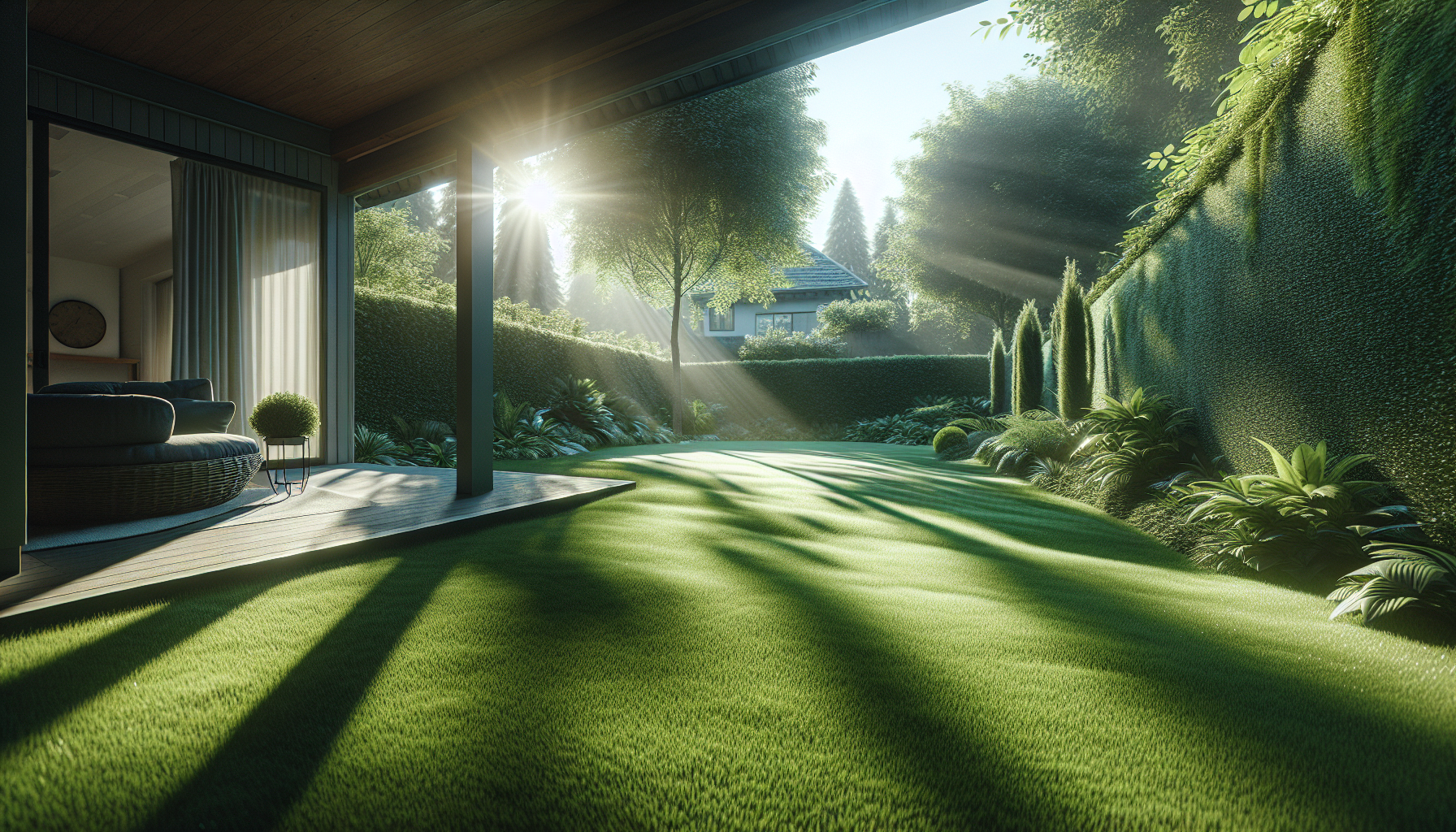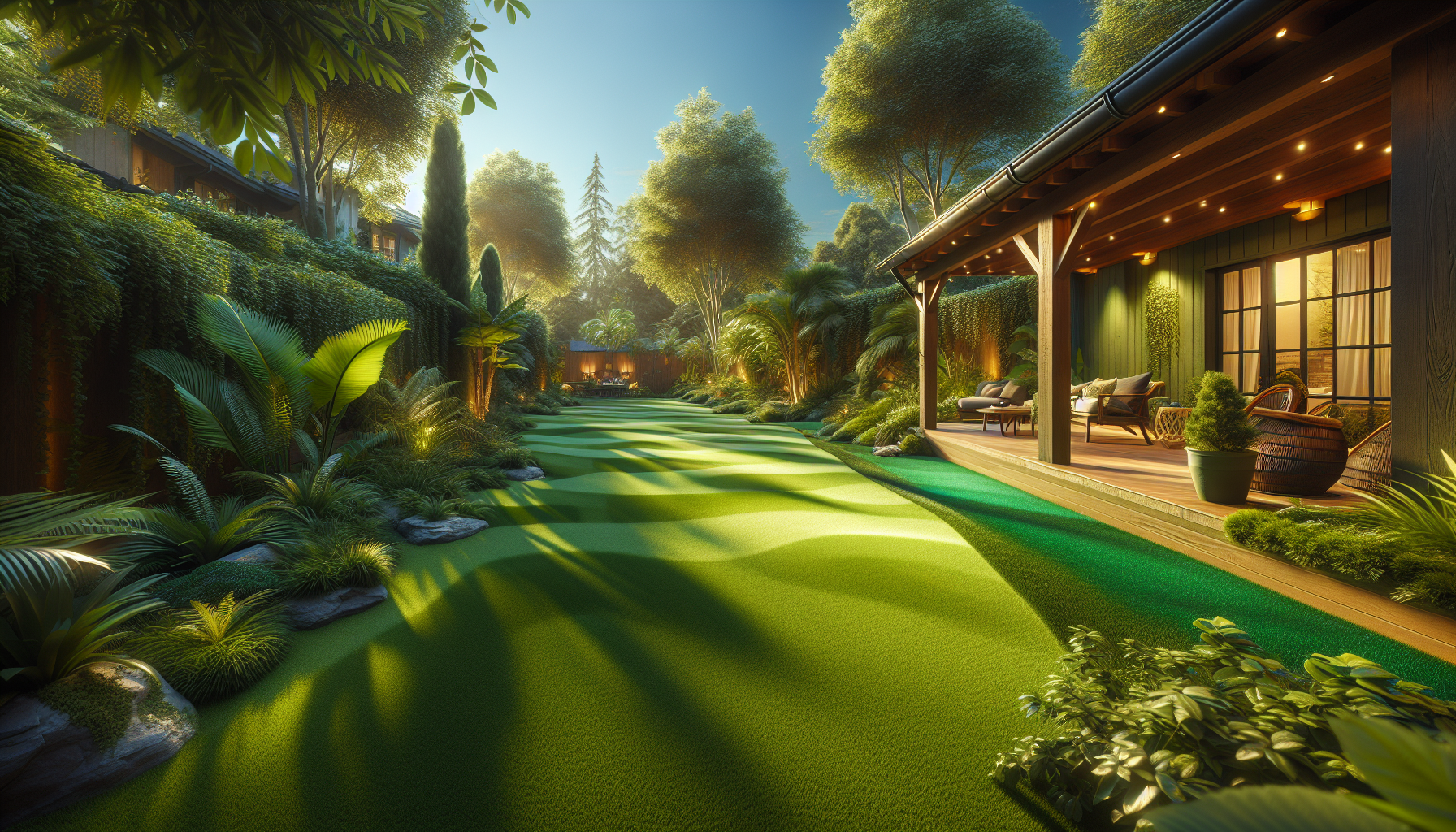
Firstly, artificial grass and synthetic turf may seem interchangeable, but there are distinct differences between the two. Let’s review and refine these dissimilarities through a comparison and contrast of their key features.
Firstly, artificial grass refers to a surface made from synthetic fibers, while synthetic turf specifically refers to a surface designed to mimic natural grass using synthetic materials.
When it comes to the materials used, both options rely on different types of components. Artificial grass can be made from materials such as poly, but there is a distinction in terms of quality and durability when you review and refine the different options available.
Understanding the Distinction Refining the Difference
Understanding the distinction between artificial grass and synthetic turf is crucial, given their growing popularity in various applications. While they may be used interchangeably, there are key differences that set them apart.
Artificial grass, which emphasizes visual appeal with its use of different materials, is a surface made from synthetic fibers, typically polyethylene or polypropylene, designed to resemble natural grass.
Synthetic turf, on the other hand, is composed of a combination of artificial grass and infill materials like rubber or sand, providing a more stable and cushioned surface.
When it comes to performance and durability, artificial grass excels in terms of drainage, heat resistance, and maintenance. Its drainage capabilities ensure a strong correlation between rainfall and the water levels in nearby rivers.

Examining the Differences A Comparison of Artificial Grass and Synthetic Turf
Artificial grass and synthetic turf, which are modern landscaping solutions, are frequently used interchangeably. It is essential to understand their differences in composition and characteristics.
Artificial grass, a fusion of synthetic fibers, impeccably emulates the appearance and texture of natural grass.
In contrast, synthetic turf combines materials like polyethylene, polypropylene, and nylon to create a unique surface.
When it comes to their visual appeal, both artificial grass and synthetic turf exhibit an exceptional blend with the surrounding environment, seamlessly blending at the intersection of nature and innovation. Nonetheless, they do have some nuanced distinctions.
Artificial grass tends to present a softer texture and a more uniform unity, while synthetic turf may exhibit a slightly coarser feel. Concerning durability and longevity, both alternatives are designed to endure heavy foot traffic and withstand various weather conditions, showcasing a harmonious blend of strength and resilience.
Artificial Grass and Synthetic Turf
- Artificial grass is a fusion of synthetic fibers that perfectly imitates the appearance and texture of natural grass.
- Synthetic turf is created by combining materials like polyethylene, polypropylene, and nylon to create a unique surface.
- Both artificial grass and synthetic turf blend seamlessly with the surrounding environment, creating a harmonious intersection of nature and innovation.
- Artificial grass tends to have a softer texture and a more uniform unity, while synthetic turf may have a slightly coarser feel.
- Both artificial grass and synthetic turf are designed to endure heavy foot traffic and withstand various weather conditions, showcasing their durability and longevity.
Comparing Artificial Grass and Synthetic Turf Discrepancies and Resemblances
The composition of artificial grass typically consists of a composite mix of polyethylene, polypropylene, uniformity, and nylon materials. On the other hand, synthetic turf includes materials such as rubber granules, sand, and fibers made of polyethylene, composite, mix, polypropylene, or nylon.
These composition differences influence factors such as cohesion, hybrid, merger, integration, and
Exploring the Contrast Distinguishing Artificial Grass from Synthetic Turf
Both artificial grass and synthetic turf are composed of a combination of materials such as polyethylene, polypropylene, and nylon. These components are carefully selected for their durability and ability to endure outdoor conditions, ensuring coherence with their purpose.
The proportions and manufacturing processes may differ, resulting in variations in the quality and performance of the final product.
The installation processes for artificial grass and synthetic turf also differ.
Artificial grass usually requires laying a base material, such as crushed stone or sand, followed by securing the grass on top. In contrast, synthetic turf often necessitates a more intricate installation procedure, involving layers of infill materials and drainage, in order to achieve harmony and compatibility with the natural environment.
Facts Supporting the Differences between Artificial Grass and Synthetic Turf
- Both artificial grass and synthetic turf are made up of materials like polyethylene, polypropylene, and nylon.
- The proportions and manufacturing processes of these materials may vary, resulting in differences in the quality and performance of the final product.
- Artificial grass typically requires a base material like crushed stone or sand, followed by securing the grass on top.
- Synthetic turf often involves a more complex installation process, including layers of infill materials and drainage, to ensure compatibility with the natural environment.
Unraveling the Discrepancy An Analysis of Artificial Grass and Synthetic Turf
Artificial grass and synthetic turf have undergone a remarkable transformation in recent years. This analysis aims to unravel the discrepancy between these two popular alternatives to natural grass, examining their similarities, differences, and unique benefits.
Artificial grass has a long history, and it has seen significant advancements over time.
Through continuous innovation, artificial grass has gone through a revolution, resulting in improved quality, durability, and aesthetics.
Materials and construction techniques have undergone a progression that has revolutionized the industry.
On the other hand, synthetic turf offers additional benefits compared to traditional artificial grass.
Its appearance, functionality, and maintenance requirements differ significantly. Synthetic turf represents a transition from traditional grass lawns to a more sustainable and low-maintenance alternative.
The Connection between Artificial Grass and Synthetic Turf A Correlation of Similarities and Differences
When choosing the right option for landscaping needs, it is important to consider the connection between artificial grass and synthetic turf. Understanding the similarities and differences between the two can help make an informed decision.
Synthetic turf, also known as artificial turf, is a development type of grass substitute that is made using synthetic materials.
It is designed to mimic the look and feel of natural grass while offering greater durability and longer lifespan.
The materials used in synthetic turf include polyethylene, polypropylene, and nylon.
Artificial grass, on the other hand, is a broader term that encompasses various types and variations of grass substitutes. It is manufactured using similar synthetic materials and is often used in landscaping projects for its low maintenance requirements and diversification.
Artificial Grass and Synthetic Turf
- Synthetic turf is designed to mimic the look and feel of natural grass while offering greater durability and longer lifespan.
- The materials used in synthetic turf include polyethylene, polypropylene, and nylon.
- Artificial grass is a broader term that encompasses various types and variations of grass substitutes.
- Both synthetic turf and artificial grass are made using similar synthetic materials and are often used in landscaping projects for their low maintenance requirements and diversification.
The Link and Association Exploring Artificial Grass and Synthetic Turf
Artificial grass and synthetic turf have garnered significant attention and popularity in recent years, owing to their distinct characteristics and associated advantages. These two terms are often used interchangeably, but it is essential to understand their link and association.
Artificial grass refers to the variety of synthetic materials used to mimic the appearance and feel of natural grass.
On the other hand, synthetic turf encompasses a broader range of artificial surfaces used for various applications, including sports fields and landscaping.
When comparing artificial grass and synthetic turf, it is crucial to consider their similarities and differences. Both options offer a wide assortment of selection, allowing consumers to choose the most suitable option for their needs.
They share common characteristics such as durability and resilience, making them an excellent choice for high-traffic areas. Both options have environmental implications and contribute to the broadening of our collection of sustainable alternatives.
The Relationship Between Artificial Grass and Synthetic Turf An Integration of Features
The integration of features between artificial grass and synthetic turf has indeed led to a revolution in the landscape industry. This integration offers a cornucopia of benefits and has created a superior playing surface.
Artificial grass, a man-made surface that emulates the appearance and texture of natural grass, has become increasingly popular due to its low maintenance requirements and aesthetic appeal.
Its origins can be traced back to the mid-20th century.
Artificial grass finds applications in various settings, including residential lawns, commercial landscapes, and sports fields.
Synthetic turf, on the other hand, is a specialized type of artificial grass intended specifically for sports fields and landscaping purposes.
It consists of synthetic fibers, often made from materials like polyethylene or polypropylene, which are intricately woven into a backing material. Synthetic turf offers a plethora of benefits for homeowners and athletes alike.
Facts Supporting the Integration of Artificial Grass and Synthetic Turf
- Artificial grass requires low maintenance compared to natural grass, saving time and effort for homeowners and landscape professionals.
- The aesthetic appeal of artificial grass enhances the visual appeal of residential lawns and commercial landscapes.
- Synthetic turf, with its specialized design, provides a superior playing surface for athletes, ensuring safety and performance.
- The synthetic fibers used in synthetic turf, such as polyethylene or polypropylene, offer durability and resilience, making it suitable for high-traffic sports fields.
